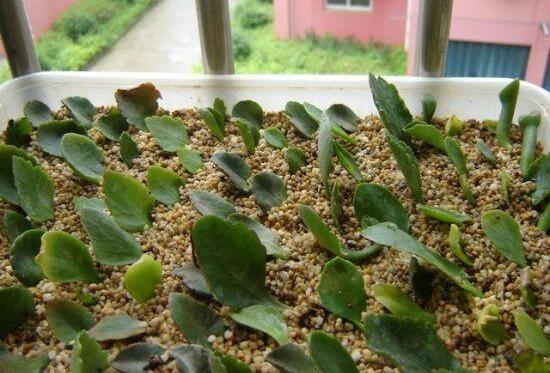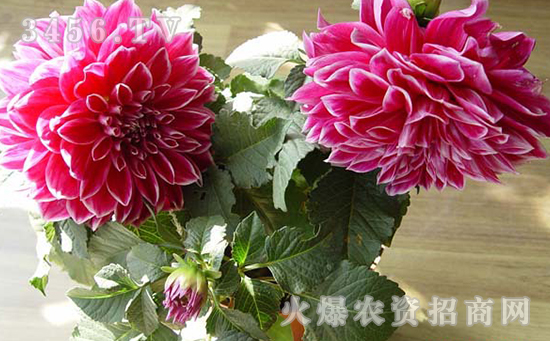The method of water insertion propagation of African violets?
The method of water insertion propagation of African violets? African violets can be propagated by inserting leaves in water. Take a leaf, the petiole can leave 4cm, fill the bottle with water, insert the leaf into the bottle, the mouth of the bottle holds the leaf, the petiole is suspended in the water, adjust the water surface, and let the petiole soak 2cm in the water.
Often add water to keep the leaf surface stable, after 7-10 days, the petiole base will take root, and after 20-40 days, green buds will appear on the petiole, and the buds will grow into more than 1 cm. The seedlings can be transplanted in the sand table and can be planted in about 20 days.
It can blossom after 3 or 4 months. Water insertion is simple, but it has no advantages, so water insertion is generally not used for reproduction. The above is an introduction to the water insertion propagation of African violets.
How to reproduce African violets? the propagation method / leaf insertion of African violets is the most practical.
When it comes to African violets, flower friends must be no stranger. It is a kind of ornamental flowers with a wide variety and rich colors, which is deeply loved by flower friends. In life, there are many people who want to raise African violets, they can be bought and raised, it is better to plant them themselves, and this requires us to master the breeding methods of African violets. So how do African violets reproduce? Today, the editor will give you a detailed introduction.
I. how African violets reproduce

When it comes to the reproduction of African violets, there are three common methods: leaf insertion, sowing and tissue culture. Among them, leaf insertion is the most practical, which is to insert the leaves of African violets into the cultivated soil and plant them in pots when they take root; sowing is to sow African violets into the soil and move seedlings after they germinate; and tissue culture is more troublesome. You just need to know.
II. Methods of propagation of African violets
(1) Leaf insertion and reproduction of African violets
1. Cutting time
African violets are most commonly used in cutting propagation, which is dominated by leaf cuttings. the best cutting time is in spring and autumn, because it has a higher rooting rate in the environment of 18-24 ℃.
2. Cuttings selection
African Violet leaf insertion, the most important thing is to choose cuttings. After the African Violet florescence, everyone chooses the healthy and full leaves, leaving 2 cm at the petiole, and the rest are cut off as cuttings.
3. Cutting medium
Because it is an African violet leaf cuttage, no root, can not absorb water, so its cutting medium should not contain too much water, it is best to good ventilation medium, such as perlite and vermiculite.
4. Cuttings start
Dry the cut leaves slightly, then insert them into the prepared medium, and then maintain a high air humidity. Generally, it can take root 3 weeks after insertion, and seedlings will be produced in 2-3 months. At that time, the seedlings will be moved into a 6 cm basin, and then they can be maintained according to the breeding method of African violets.
(2) sowing and breeding of African violets
In addition to cutting, the most commonly used method of propagation of African violets is the sowing method, and the best time is from September to October, when the germination rate is high. Sowing method: sow the seeds of African violets into the basin soil, do not cover the soil after sowing, and flatten them. Generally, it can be germinated in 15-20 days, and the seedlings can be transferred after 2-3 months.
(3) tissue culture and reproduction of African violets.
How do African violets reproduce? We can also use tissue culture. Methods: the leaves, petioles and epidermis of African violets were cultured in MS medium with 1 mg / L 6-benzylaminoadenine and 1 mg / 1 naphthylacetic acid. Adventitious buds could be formed after 4 weeks, and plantlets could be planted after 3 months.
Generally speaking, African violets can survive whether it is leaf cutting, sowing, or tissue culture, but leaf cuttings are the most suitable for indoor reproduction. Of course, the method is dead, people are alive, we can according to the actual situation, choose the method to breed. With regard to the breeding methods of African violets, this is the end of the editor's introduction, hoping to give you some help.
African Violet Leaf insertion Propagation method Leaf insertion Propagation of African Violet is carried out after flowering. Select a strong and full leaf and cut it from the petiole that remains 2cm. Before, it is best to soak the cut with 100ppm's naphthalene acetic acid for 1-2 hours. If there is no naphthalene acetic acid, you can also dip the cut with vitamin B1. In this way, it is advantageous to accelerate the rooting of leaves after insertion. When the cutting mouth is slightly dried, the petiole of the leaf is put into the plain sandy soil and placed in a shade place to maintain a high air temperature, the temperature should be about 21 ℃, take root after about 3 weeks, and new seedlings grow after 2 months, then they can be transplanted into a small pot. It takes about half a year from cuttage to flowering. If used in the tiller cuttings, the effect is also good. Cutting can be carried out from June to July or from September to October, flowering from October to November, from October to November and from March to April of the following year.
- Prev

How to raise the orchid?
How to raise the orchid, in order to make the family potted orchid have flowers all the year round, we must do a good job in the following cultivation and management: (1) use pots and soil. The fleshy root system of Clematis paniculata is hypertrophic, and flowering plants should use large and deep pots. Preparation of basin soil: 3 parts of rotten leaf soil, 5 parts of garden soil, appropriate amount of coarse sand, sawdust and fine cinder particles.
- Next

Planting methods of potted dahlias
The planting method of potted dahlia, the key to the growth of potted dahlia is to strengthen the management of potted soil, give sufficient light, apply water and fertilizer frequently, and manage shaping and pruning in time. (1) strengthen the management of basin soil.
Related
- Fuxing push coffee new agricultural production and marketing class: lack of small-scale processing plants
- Jujube rice field leisure farm deep ploughing Yilan for five years to create a space for organic food and play
- Nongyu Farm-A trial of organic papaya for brave women with advanced technology
- Four points for attention in the prevention and control of diseases and insect pests of edible fungi
- How to add nutrient solution to Edible Fungi
- Is there any good way to control edible fungus mites?
- Open Inoculation Technology of Edible Fungi
- Is there any clever way to use fertilizer for edible fungus in winter?
- What agents are used to kill the pathogens of edible fungi in the mushroom shed?
- Rapid drying of Edible Fungi

